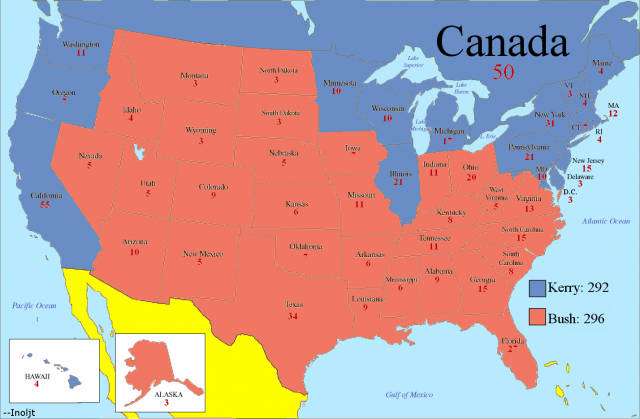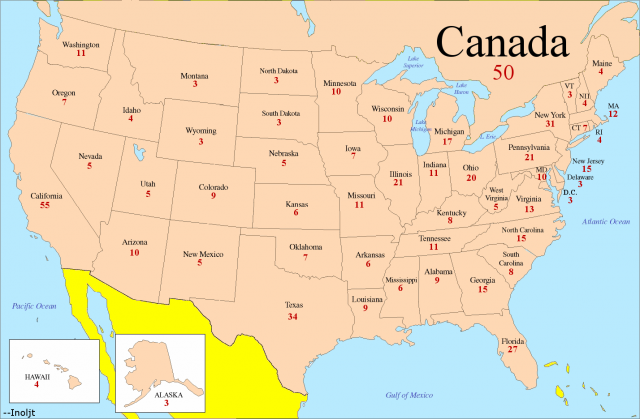Senate:
• IN-Sen: Chris “Count” Chocola, head of the Club for Growth and himself a Hoosier, says his organization may step in to help oust apostate Sen. Dick Lugar. The CFG has already talked to Treasurer Richard Mourdock, and if they get involved, they could make up for his lackluster fundraising so far.
• MA-Sen: Remember when ThinkProgress busted Scott Brown for sucking up to David Koch for donations while he was publicly saying he wasn’t even thinking about 2012? His pitch worked, I guess: Koch Industries coughed up a $2,500 donation to Brown’s campaign last quarter.
In other MA-Sen news, why does Barney Frank keep doing this? On Monday, he repeated his remarks that he thinks Newton Mayor Setti Warren shouldn’t run for Senate, this time to local blog Newton TAB. I honestly think this is a bit embarrassing for Frank, and makes him look like a jackass. It’s an admission that his private suggestions to Warren haven’t been well-received, and that he’s had to take to the press to accomplish what he apparently doesn’t have the power to do on his own. It’s ugly, and what’s more, I don’t even see the percentage in it. Why does Frank care so much whether Warren runs? Really, just enough.
• MN-Sen: Former state Sen. and unsuccessful 2010 SoS candidate Dan Severson says he might seek the Republican nod to challenge Amy Klobuchar, who so far has drawn no opponents. Severson says he’ll decide by May. Also, attorney Chris Barden, another unsuccessful statewide candidate last year (he ran for AG), says he may attempt a Senate race, too.
• MO-Sen: It’s getting’ mighty crowded in here… well, maybe. Wealthy businessman John Brunner (who can at least partially self-fund) says he might join the GOP field to take on Sen. Claire McCaskill. Reps. Todd Akin and Blaine Leutekemeyer are also still weighing bids, while former Treasurer Sarah Steelman and teabagger fave Ed Martin are already in the race.
• TX-Sen: This is just weird. Ashwin Madia (who you may remember as the Dem candidate in MN-03 back in 2008) is also chair of the progressive veterans group VoteVets. His organization put out a statement the other day in which he said it was “encouraging” to see Lt. Gen. Ricardo Sanchez considering the Texas Senate race as a Dem. It’s strange, as Adam Serwer points out, because Sanchez had a very suspect record on torture during his tenure as US commander in Iraq, while VoteVets has been very critical of torture. Another spokesman for the group hurried to say that VoteVets was not issuing a formal statement of endorsement, just an attaboy for a fellow servicemember.
• VA-Sen: Teabagger Jamie Radtke raised just $55K in Q1 and has only $47K on hand. I’m betting that if George Allen does wind up dealing with a serious speed bump on his way to the GOP nomination, it’s going to take the form of Del. Bob Marshall, not Radtke. Still a big if.
• VT-Sen, VT-AL: Sen. Bernie Sanders raised $770K in Q1 (not bad for the 49th-largest state in the nation) and has over a million in the bank. The Burlington Free Press pegs an uptick in donations to Sanders after his now-famous eight-hour speech on the Senate floor in which he blasted tax cuts for the wealthy. Meanwhile, Rep. Peter Welch now has a million on hand.
Gubernatorial:
• NJ-Gov, NJ-Sen: Chris Christie’s starting to smell like a plate of scungilli left out in the sun after a July picnic. His job approval has dropped to 47-46, according to Quinnipiac, from 52-40 just a couple of months ago. Sen. Bob Menendez isn’t doing so hot either, 42-40, but those sorts of numbers are nothing new for him (and are actually better than what he was getting last year). In news of more immediate importance, Dems improved to 47-39 on the generic legislative ballot, up from 43-41. (Thanks to andgarden for spotting that question, tucked away at the very end of the poll.) Also fun: Q asked respondents for an unprompted, open-ended one-word description of Christie. The number one response, by far? “Bully,” with 140 mentions.
House:
• AL-05: This is just odd. Freshman Republican Mo Brooks cancelled a town hall and replaced it with one-on-one meetings with constituents-by appointment only. What makes this extra-weird is that these meetings are scheduled to take place across the state line in… Tennessee. Reminds me of this infamous incident from the classic MS-01 special back in 2008.
• IA-04: Some great number-crunching from G-squared: The new 4th CD went for Terry Branstad 59-37 in 2010, 50-48 for GOP gubernatorial candidate Jim Nussle in 2006, and 49-48 for Tom Vilsack in 2002. I’ll go one further and tell you that Vilsack lost the new 4th in 1998, 47-52. Greg also says that Rep. Steve King currently represents 47% of new CD.
• IL-03: Politico has a profile of John Atkinson, the Democratic businessman who may challenge Rep. Dan Lipinski from the left. Atkinson, who has already raised a boatload, hasn’t formally declared yet (and may be waiting on redistricting), but a main theme for him is Lipinski’s vote against healthcare reform.
• NY-13: Ex-Rep. Mike McMahon, recently speaking to the Bay Ridge Democratic Club, definitely sounds like he’s leaning toward a comeback. The linked piece from the Brooklyn Eagle contains McMahon’s ruminations on why he lost last year, but I’m not sure I understand what he thinks the reasons are. On the one hand, he says “[t]here was a drop-off in progressive voters.” On the other hand, he cited a memo from Third Way (ugh, but what do you expect) which polled Obama “switchers” and “dropouts.” The memo claims that “[s]witchers were eager to vote in this election, whereas droppers didn’t come out for a multitude of reasons, none of them being they were upset with Democrats.”
What this misses out on, of course, is that Democratic organizations who were pissed with McMahon’s vote against healthcare reform were less inclined to bust their asses for him and drag apathetic voters to the polls on his behalf-something members and officials of the Bay Ridge club made plain to him. (The article says some attendees used “harsher language,” so since this is Brooklyn we’re talking about, enjoy a moment or two imagining what this sounded like.) I’m not sure what McMahon thinks the solution is for next year, if he runs again, but it doesn’t sound like he’s ready to take back his anti-HCR vote. I think he’d be wise to do so.
• RI-01: Former Republican state Rep. John Loughlin, who lost by six points to now-Rep. David Cicilline last year, says he’s considering a rematch, but first he’s serving another tour of duty in Iraq. I wonder if Cicilline’s self-inflicted wounds regarding the financial woes of Providence (the city of which he used to be mayor) will make him vulnerable-if not next year (which of course is a presidential year), then at some point in the near future… or in a primary.
Other Races:
• WI Recall: Republicans say they will file recall petitions against three Democrats today: Dave Hansen, Jim Holperin, and Robert Wirch. Meanwhile, Greg Sargent says that Dems will file petitions against a fifth Republican, Alberta Darling, also today.
• WI Sup. Ct.: Yesterday, JoAnne Kloppenburg asked for a recount, which will come at state expense since the final margin of 7,316 votes was less than 0.5%. I’m pretty surprised at the decision, since overturning that kind of result seems almost inconceivable.
Grab Bag:
• Alaska (PDF): Dave Dittman, a pollster and former aide to the late Sen. Ted Stevens, tested Alaskans’ feelings about local pols last month. Sen. Mark Begich, up for re-election in 2014, has a 57-33 job approval rating, while Sen. Lisa Murkowski is at 71-27 and Rep. Don Young is at 63-32. Joe Miller, who says he might run against Young next year or against Begich next cycle, has a hilariously awful favorability rating of 18-73. (FWIW, Sarah Palin is at 36-61.) Note that the poll had oddly long field dates: March 3 through March 17.
• Demographics: Aaron Blake has another good piece looking at the changing demographics of majority-black districts.
• House Majority PAC: The new Dem “super PAC” is out with its first-ever media buy (which they claim is “substantial”-you better be telling the truth), hitting ten GOP freshmen who voted for Paul Ryan’s budget plan with radio ad. You can listen to a sample spot against Sean Duffy here. Click the first link for the other nine names.
• DCCC: Speaking of ad buys, props to Dave Catanese for busting what turned out to be a comically bullshit media “blitz” by the DCCC. I groused about this one yesterday, complaining that the size of the buy was sure to be “quite small,” but I had no idea that it would be this comically small: The total purchase was just $6,000 across twenty-five districts, with just $40 (yes, $40!) spent against Larry Buchson in IN-08. Of course, it was the NRCC which provided this info to Catanese, which I’m not sure is such a smart move, since they play this stupid game, too. But my bigger concern is whether local reporters who wrote about these ads will be insulted by the joke dollar values and ignore the D-Trip in the future. I sure as hell would.
Redistricting Roundup:
• Colorado: After instantly descending into a whole bunch of acrimony (mostly, it seemed to me, from the GOP side) after the first batch of maps were produced, both parties agreed to go back to the drawing board and start with a clean slate. Republicans sound a lot more excited about the prospect than Dems, but we’ll see if this actually produces any kind of agreement… or if a stalemate eventually leads to court-drawn maps.
• Pennsylvania: No surprise here: The Republican majority on the PA Supreme Court picked a Republican superior court judge to serve as a tiebreaker on the panel which will re-draw Pennsylvania’s state legislative maps. This is a direct consequence of a shameful loss of an open Dem-held seat on the court in 2009.
• Texas: A new plan for the Texas state House passed a House committee yesterday. The map increases the number of Latino districts from 28 to 30, but Democrats seem convinced that there are serious VRA issues with it.















